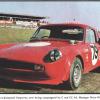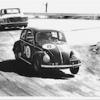Mick, in England they did thing differently. Nothing like Australian Minis.
Yep...understand Mike..my copy of Parnell has gone missing...but its the welding of numbers comment that got me...
Classic Mini VIN Numbers
Find out the true identity of your Mini engine. Using the VIN number stamped on a plate on the inner wing or bonnet slam panel, and also stamped into the scuttle on later models. There should also be an identification tag on the engine block with the VIN number on.
To decode your VIN number, scroll down to find the approximate year. If unknown, check through each section.
Re-edited information as sourced from MiniMania.com
1959 - September 1969
Early car VIN format is like this:
C-A2S7L-###A
First position (e.g. C-A2S4L-###A):
A = Austin (non-Cooper and S)
C = Austin Cooper or Austin Cooper S
K = Morris Cooper or Cooper S
M = Morris
R = Riley
W = Wolseley
Second position (e.g. C-A2S4L-###A):
= A-Series engine.
Engines for this period included: 848cc, 970cc Cooper S, 997cc Cooper, 998cc Cooper and non-Cooper, 1071cc Cooper S, 1275cc Cooper S
Third position(s) (e.g. C-A2S4L-###A):
= Body type:
2S = 2-door saloon
B = Moke
U = Pick-up
V = Minivan
W = Estate (with or without wood).
Fourth position (e.g. C-A2S4L-###A):
= Series of Austin, or Morris, etc.:
1 = MkI Riley Elf, Wolseley Hornet, and Austin/Morris Moke
2 = MkII Riley Elf or Wolseley Hornet
3 = MkIII Riley Elf or Wolseley Hornet
4 = MkI Morris
6 = MkII Morris
7 = MkI Austin
B = MkII Austin
Fifth position (e.g. C-A2S4L-###A):
D = De-Luxe.
L = Left hand drive. (no right hand drive designation)
S = Super De-Luxe
Number positions (e.g. C-A2S4L-###A):
= The sequential build number:
Cars produced at Longbridge and Cowley both started with the numbers 101. These were mixed up across all model types. The numbers extend to seven digits by September 1969.
Last position (e.g. C-A2S4L-###A):
= Assembly plant
A = Longbridge
M = Cowley





















